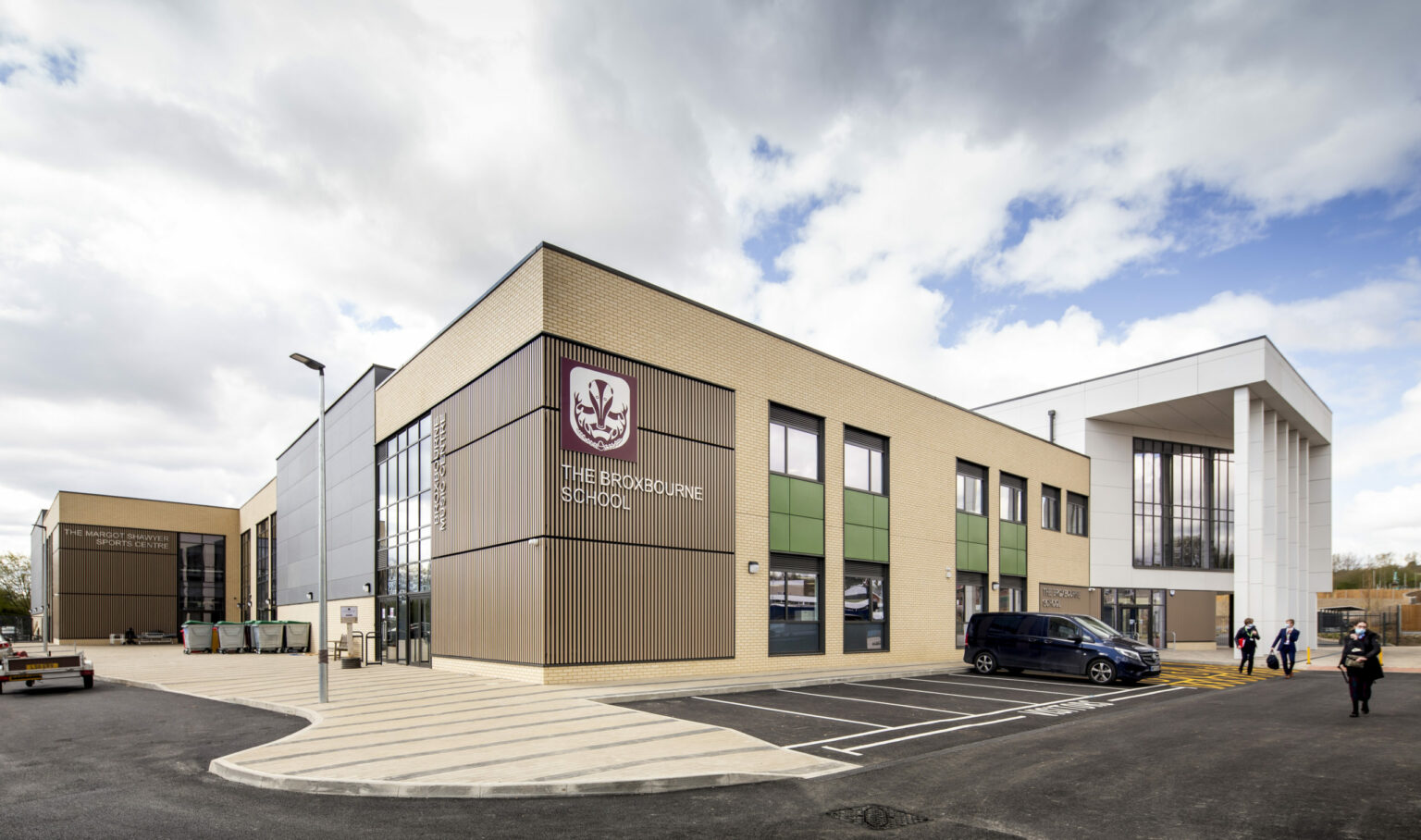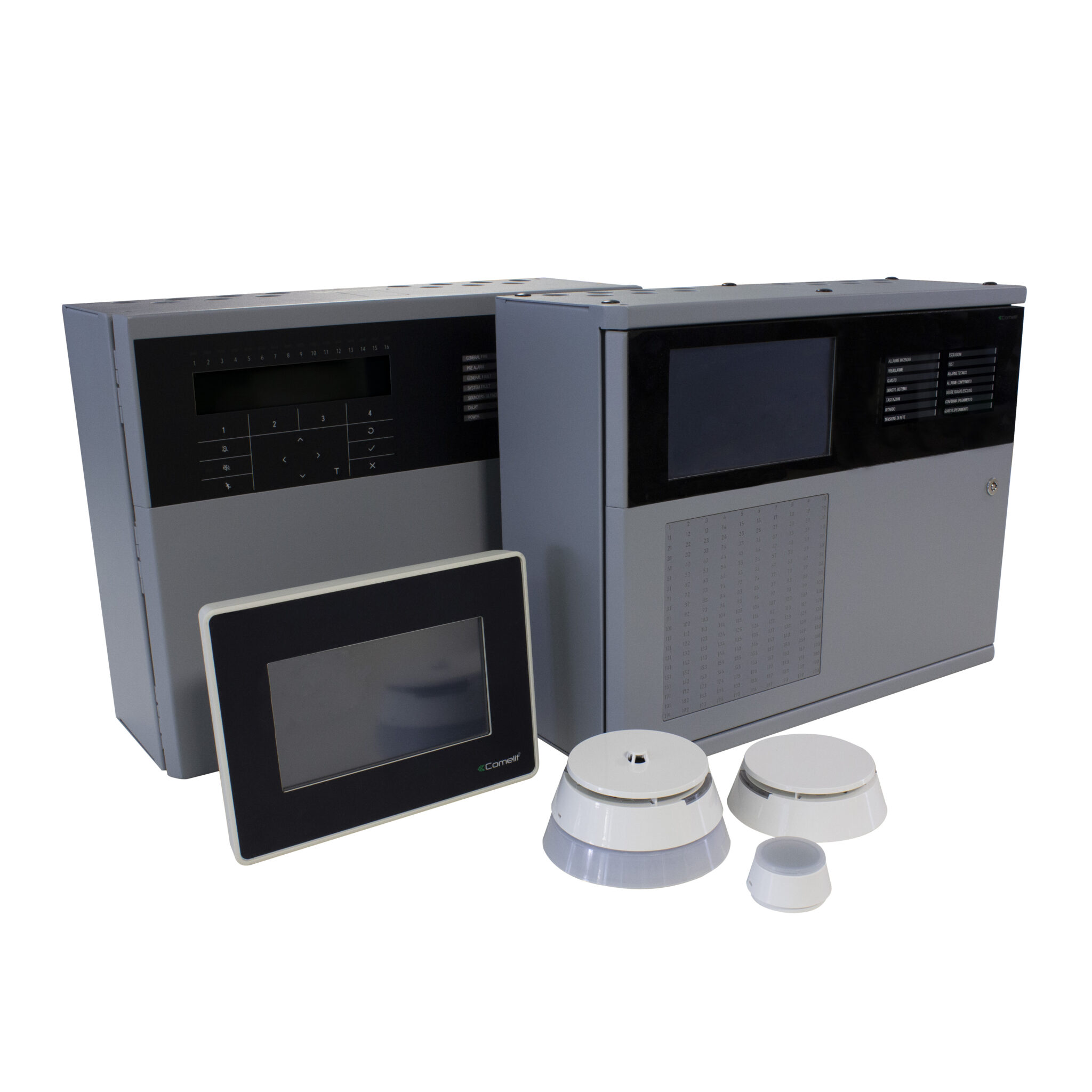Comelit-PAC insists on integrating fire safety systems early
- April 13, 2022
- 8:41 am


Iain Hoey
Share this content
Mandy Bowden, fire manager, Comelit-PAC highlights how legislation and fire detection and alarm systems have evolved to enable tailor made solutions to meet individual smart building requirements
Fire safety is vital to consider in new buildings, construction, or refurbishment projects as early in the specification process as possible, to ensure systems can be designed in compliance with latest legislation and still blend with their surroundings, without losing their function.
Historically, fire safety design of buildings has been seen as a constraint to innovative design, but this needn’t be the case.
The future of fire detection and alarm systems is changing. From predictive advancements to sustainable technologies, there is now an opportunity to specify preventative protection systems tailored to each individual property together with their owners and users.
Setting the Scene
Successful fire systems design requires an understanding of a wide range of issues and components, and the interactions between them such as, fire source, smoke movement, heat transfer to the building structure, detection, human behaviour and toxicity.

Finding the right fire detection system and design is the most difficult task. And currently, this is set against time, budget and resource stretched personnel, who especially during the pandemic, had essential Government guidelines to comply, and fire safety found itself slipping down the agenda.
Yet the findings of the Grenfell Tower tragedy and Fire Safety Act 2021 (alongside the forthcoming Building Safety Bill) as part of the ‘biggest changes to building safety in a generation,’ demonstrate the importance of fire safety.
With its significant ramifications for those organisations considered “responsible persons” it highlights the need for compliance and the risk of enforcement powers and sanctions for those that do not prioritise fire safety.
Today’s global environment requires the fire and life safety industry to innovate with solutions, installing systems that can adapt to its environment and support and understand the specific needs of a building’s purpose.
It is down to consideration of these elements and all who occupy the facilities early in the specification process of any works programme, to determine the best technology and installation of compliant fire detection.
Fire systems by design
Above all else, fire detection is there to save lives; but the way in which systems are presented, will depend on their surroundings. Fire systems specification can begin as early as during the briefing and continue into the handover and close out stages.
Even then the need for risk assessments are essential to maintain on a regular basis, again, especially in line with new expectations of the Fire Safety Act 2021.
If fire safety is outlined in the initial design process, it can contribute to the smooth and efficient running of the building construction, which together with identifying design and consultancy services early on, can deliver on even the most demanding fire safety and security specification requirements, of today and the future.
The same is true for refurbishment projects, and change-of-use schemes. When you alter how a building is used, you also change the measures required to make it safe.
It’s not a case of one size fits all as different buildings need different approaches. Areas within those buildings also need to be treated differently – for instance, escape routes in a residential block (like public corridors and staircases), need greater fire protection than individual flats to allow people time to evacuate.
The best fire protection strategies consider the design of individual buildings and how they are used by occupiers, using both active and passive measures in a holistic approach.
Fire systems in education
Comelit-PAC was involved in an award-winning eight-form entry secondary school and sixth form academy, designed as part of a £100m development in Broxbourne, Hertfordshire.
Designed by architects Bond Bryan and built by Chase Homes, Broxbourne School offers multiple educational buildings, including a new indoor sports hall, 3G football pitch, a multi-use games area for sports such as netball and tennis, together with The Broxbourne Music Centre.
Winner of the School Building Awards, presented by the Education Business Awards, the new campus, completed five months ahead of schedule, will cater to the 1,500 students aged 11 to 18, as well as the wider community.
By integrating fire safety into the specification detail, systems could be installed that
have the flexibility to expand with a facility or building requirement, to enable more to benefit from this ambitious new college.

Says Ben Lewis, of Matrix Fire & Security: “We knew instantly that Atena would accommodate the requirements of the school and blend seamlessly with the fabulous teaching and learning environment that has been created.”
What this demonstrates is when creating school buildings fit for 21st Century learning, holistic design principles must be adopted. While the Comelit-PAC Atena addressable panels represented just one component of this amazing new build, by being so easy to use, they provide an effective way to keep the school community, and the broader range of buildings’ users, safe and protected.
Fire systems in healthcare
Any fire detection technology must be strategically placed, unobtrusive and not affect the aesthetics or daily busy operations of the staff on site. And risk assessments were essential to maintain a safe environment.
This is also particularly essential in new hospitals and mental health facilities, where the focus is the use of natural light and bright, airy spaces, to positively impact both workforce well-being and where every part of the site is seen as potentially having therapeutic value.
Comelit fire specification
Comelit-PAC is evolving with the specification requirements of discerning end users, providing the products and services necessary for installers to meet burgeoning expectations.
Most recently, it has upgraded its entire fire system range with the launch of LogiFire, which represents a complete technical and aesthetic evolution of its innovative addressable platforms.
LogiFire is guaranteed by a new range of control panels. The systems can be expanded from 1 to 8 loops and support up to 2000 devices on an 8-loop system and have a greater loop capacity of 700mAh. The panels are feature rich and have many onboard fault-finding diagnostics.
The stylish product design is a unique feature of the range, with carefully constructed lines and a neutral appearance to ensure fire safety has a natural blending with surroundings, without affecting the experience for visitors or staff on any site development.
Most of all, LogiFire prioritises reliability and performance levels. Its development has taken consideration of increasing reliance on integrated systems with security through the internet of things, leaving room for LogiFire to evolve to meet changing fire safety requirements.
In summary, many innovative building designs now utilise fire safety engineering rather than having to rely solely on functional-based codes. This approach can enable architects to achieve innovative cost-effective designs while meeting fire safety design needs.
The introduction of the stringent Fire Safety Act 2021, added extra pressures on Responsible Persons as accountable for reducing the risk of fires.
By considering fire detection and alarm systems early on in any works programme, establishing the facts about a building, its usage and purpose and engaging with experts through design and specification, project teams can ensure they navigate the issues safely and meet the needs of building users.
Comelit-PAC can help to incorporate tailor-made fire system design principles into a building design project without impacting on the function, aesthetics or appearance of the building.



